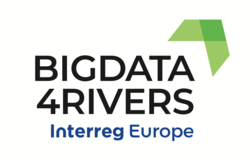Theoretical Background:
The European Water Framework Directive (WFD, 2000/60/EC) proposes measures for the conservation and protection of rivers and lakes - introducing for the first time the concept of "ecological importance" of water. Therefore, main aim of WFD is to achieve a good status for all water bodies within specific deadlines. through Surveillance, Operational and Investigative monitoring programs that lead to more reliable datasets and, hence, allowing the prediction of water quality on catchment scale.
Aim of the project:
The EU Horizon 2020 INTCATCH project had the overall aim of utilizing a range of innovative monitoring tools to facilitate investigative monitoring activities to identify sources of pollutants. The work is of interest to those involved in the formulation and delivery of policies and actions for managing and monitoring water bodies. This includes those working for regulatory bodies, government departments and professionals working in the water sector. The Research and Development Department of EYDAP is responsible for the operation of two autonomous robotic boats and since 2019 demonstrates them, through concrete findings, for the first time throughout Greece.
Architecture of the boats:
The INTCATCH system architecture consists of the boat, the electronic parts and the sensors. The boat can be directly tele-operated through an RC device or controlled with a tablet that provides high level instructions to the system, i.e.: monitor a pre-defined area using autonomous navigation. Moreover, data can be visualized during the data collection campaign via a mobile app. The sensors are located beneath the boat with the basic set consist of Dissolved Oxygen, Temperature, pH and Electrical Conductivity (EC). In addition, upon request, can have two specialized sensors, a Chlorophyll α (Chl - a) and an Intelligent Spectral Analyzer (ISA), a spectrophotometer that can determine total nitrogen, orthophosphate and nitrate, ammonia, total suspended solids and turbidity.

Analysis:
The autonomous boats can operate with a speed of more than 4 km/hour and collecting approximately 10,000 data/hour. In this study we present spatial distribution of chl-a and EC in Lake Koumondourou and Kifisos river, respectively. Lake Koumoundourou is located in Attica with mean depth 3.5m, as it lies upon the sea level. Kifissos river is the main river of Athens (Greece) and the last part flows near or under a highway until it reaches the Phaleron Bay. For the best visualization of the results, a specific color pattern is followed, which includes the colors Blue, Green, Yellow, Orange and Red (indicating increasing values).
Results:
Lake KoumoundourouWithin an hour, the self-propelled boats, like floating ‘robot labs’, covered much of the inner perimeter of the lake. The concentration of Chl-a ranged from 10.0 to 17.5 µg/l and was elevated in the northeast part of the lake, probably due to the circulation of water in this direction and the influx of groundwater.Kifissos RiverThe INTCATCH boat covered almost 2 km under the highway, reaching the mixing zone of the river with the sea, identifying interesting profiles of the physicochemical parameters that were monitored. The concentration of EC ranged from 1400 μS/cm to 3500 μS/cm, indicating a significant inflow of the sea front.

Conclusions
The use of robotic boats achieves a thorough monitoring coverage both in space and in real-time providing significantly higher amount of water quality data, even from unaccessible sampling areas, without requiring costly monitoring schemes and subsequently raising alerts in time to take action to protect end users. It allows monitoring of ecological status more accurately with emphasis on phytoplankton growth and proved the eutrophic state of Lake Koumoundourou. Additionally, the application of robotic boats in Kifissos river provided valuable insights into the distribution of conductivity related to environmental pressures. Additionally, the systematic, full scale application of autonomous boats could support the investigative monitoring programs of the WFD in the future and represent a valid rapid tool/approach in case of emergencies thus assisting in more effective crisis management (e.g. in relation to climate changes events such as floodings). The Vision is that EYDAP will provide a service to authorities and organizations interested in assessing water quality in relation to catchment management and the traditional spot sampling protocols.
Research team:
• EYDAP R&D
Giorgos Sachinis, Director
Efthymios Lytras, Deputy Director
Stylianos Samios, Head of R&D
Marina Despotidou, PhD researcher
Giorgos Katsouras, PhD researcher
Nikolaos Tsalas, M. Sc. researcher
Alekos Dosis, Electronics Engineer
Main three out of 20 EU partners
• GO Systemelektronik GmbH
Thorsten Knutz, General Manager
• UNIVERSITY of Verona
Alessandro Farinelli, Professor
• UNIVERSITY of Brunel
Prof. Mark Scrimshaw, INTCATCH Coordinator











